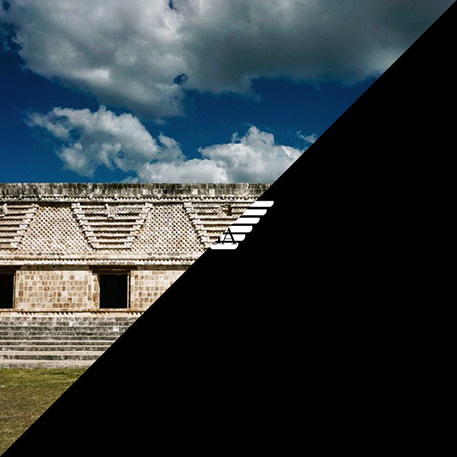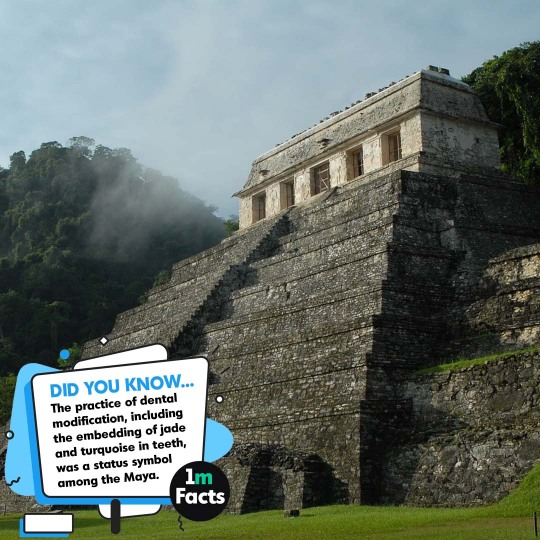#maya civilization
Explore tagged Tumblr posts
Text

Quadrangle of the Nuns | East Building, Uxmal, Mexico, 906 AD VS Emporio Armani, Logo, 1981
#uxmal#maya#archaeology#ruin#ruins#america#yucatan#unesco#world heritage#world heritage site#Pre-Hispanic#maya civilization#armani#giorgio armani#logo#fashion#clothing#eagle
57 notes
·
View notes
Link
The fall of Nojpetén in 1697 to Spanish conquistadors marked the end of the once-great Maya civilization. #FACT
#the fact site#interesting facts#maya civilization#ancient history#mayan culture#archeology#civilization#historical marvels#random facts
1 note
·
View note
Text
Lost Maya city with temple pyramids and plazas discovered in Mexico | Mexico | The Guardian
2 notes
·
View notes
Text
This website looks pretty sketchy at first glance, and although it's clearly geared towards younger kids, the level of detail and the range of topics is almost overwhelming. Here you can learn about everything from whether Aztecs used wooden saws or not, to the religious significance of brooms, to lists of flora and fauna and anything in between.
You can also ask questions, or add your own comments in each section. References are rarely used in the entries themselves, but most entries are followed by extensive reference lists and links to other sites. I'll probably post some of those in the future to highlight particularly interesting ones.
8 notes
·
View notes
Text
youtube
2 notes
·
View notes
Text
#maya#temple#mayan temple#maya civilization#mayan culture#pyramid#temple pyramid#sacrificial cult#religion#place of worship#civilization#landmark#religious building#building#architecture#3d#illustration#travel destination#blue#sky#jungle
0 notes
Text
0 notes
Text
Maya civilization created distinct artworks and fully developed complex writing system before Common Era. Their creativity was more advanced than many contemporary cultures of old world : Archaeologists have uncovered a wealth of information about Maya civilization through discoveries and deciphering of Maya art and writing. Deciphering of knowledge gained from these primary sources often results in scholars having to push back timeline of Maya inventions and achievements. A prime example is discovery of Maya writing from Pre-Classic period on stone near San Bartolo. Humidity in most of Maya areas wreaked havoc with their books, painted buildings, and artworks. So much seemed lost and then archaeologists started discovering beautifully painted murals and other art in deepest levels of Maya structures. Their habit of building new structures over and around older ones, often more than once, had done an excellent job of preservation in many cases. Maya art included stone, wood, clay, and stucco sculptures and decorations. Exquisite carvings and jewelry were made of wood, obsidian, jade, bone, shells, and stone. Action scenes were portrayed on slipped ceramic vessels, murals and reliefs. Artists made moldings, statuettes, portraits of rulers and more. Their tools included stones, obsidian and jade carving instruments, and paintbrushes. Paint for Maya art was made from pigment and water, bound with clay. Color pigment was obtained from berries, plants, fruits, ores and even insects. Special technique of Maya civilization for making “Maya blue”, a rich turquoise blue, was lost in 16th Century, sometime during Spanish conquest. Four cardinal directions were associated with colors by Maya civilization in Maya artworks: red for East; yellow for South; black for West; white for North. Favored colors were blue, representing water, wind and sky-gods and green representing vegetation and life. Only faint traces of magnificently bright colors are left on statues, monuments, temples, pyramids, houses and miscellaneous artifacts that are exposed to elements. Once archaeologists discovered hidden substructures above ground and excavated inside underground structures, they discovered well-preserved art and decorations going back throughout Maya eras. Scholars believe that royals employed full-time artists during some eras of Maya civilization. It is speculated that artists came exclusively from elite classes. Maya civilization decorated architecture with all kinds of art. A typical city center with its plazas and precision placed pyramids, adjacent buildings and monuments, were often plastered with stucco and painted red. Buildings and plazas were decorated with colorfully painted stone or stucco sculptures and sometimes murals. A chance discovery by a scuba diver in 1998 of an underwater Maya religious center led to archaeological investigations in 2007 of a sunken city in Lake Atitlan, Guatemala. It is now named Samabaj, sometimes called Atlantis of Guatemala. It was a large religious center on an island in middle of lake before it was flooded, probably after a volcanic eruption. It is frozen in Maya Pre-classic time – un-looted, and undamaged by the elements, and one can only imagine what beautiful sculptures, pottery, and other wonderful art are yet to be discovered there. Several magnificent murals have been uncovered, excavated, and restored in this century alone. These murals were painted on walls of temples, public buildings, and houses. Bonampak murals depict scenes of daily life, war, ceremonies, mythology, and more in brilliant or muted colors and use excellent techniques that outlasted elements when protected. Calakmul murals include scenes from daily lives of commoners. Oldest San Bartolo murals discovered in 2001 depict scenes from mythology and royal court. They are dated to around 100 CE.
Photographer: Glyphs on red stele from Temple of Inscriptions, early Classic period, Tikal, Guatemala (Penn University Museum)

1 note
·
View note
Text

Read the remaining facts, plus myths, quotes, faqs and an epic quiz at: 50 Rare Maya Facts That Illuminate Their Mystical World
#maya civilization#mayan#ancient civilizations#ancient city#interesting facts#fun facts#facts#random facts#today i learned
1 note
·
View note
Video
youtube
What Happened to The Mayan Civilization | Mayan Civilization Documentary...
#youtube#What Happened to The Mayan Civilization#mayan civilization#maya#maya civilization#documentary#ancient history
0 notes
Text
youtube
The Mayans Of Guatemala
#maya civilization#guatemela#youtube#youtuber#youtubeur#influenceur#influencer#romonwrites#content creator#Youtube
0 notes
Text
Unraveling the Mysteries of the Mayan Calendar: Insights from a Fascinating Lecture 🗿📆
Greetings, fellow seekers of knowledge and enthusiasts of ancient civilizations! Today, I'm excited to share with you the intriguing insights I gathered during a recent lecture on the enigmatic Mayan calendar system. The Mayans, with their remarkable grasp of time and cosmology, have left us a legacy that continues to astound and captivate.
The Long Count, the Tzolk'in, and the Haab': A Triad of Calendars:
One of the most distinctive features of the Mayan calendar is its complexity, comprising not one, but three interwoven systems. The Long Count, often associated with monumental inscriptions, tracks long spans of time. The Tzolk'in, a 260-day ritual calendar, was used for religious and divinatory purposes. The Haab', a 365-day solar calendar, governed agricultural and civil affairs.
The Astonishing Precision: Accuracy in Timekeeping:
What truly boggles the mind is the precision with which the Mayans calculated time. Their Long Count system allowed them to record dates over millions of years. Their understanding of the solar year was accurate to within minutes, a feat that rivals our modern calendars.
The Role of Astronomy: Celestial Alignments and Rituals:
Astronomy was at the heart of Mayan timekeeping. They meticulously observed celestial bodies and their movements, using this knowledge to align their temples and pyramids with significant astronomical events. The result was a cosmic tapestry woven into their daily lives and rituals.
The Popol Vuh: Mythology and Creation Cycles:
The lecture delved into the Mayan creation story as recounted in the Popol Vuh, a sacred text. The Mayans believed in cycles of creation and destruction, mirroring the rhythms of their calendars. It's a reminder of the deep connection they saw between the physical and spiritual realms.
The Mystery of the 2012 Prophecy:
Of course, no discussion of the Mayan calendar would be complete without addressing the famous 2012 prophecy. Contrary to some interpretations, the Mayans themselves did not predict the end of the world. Instead, 2012 marked the end of a cycle, a moment of transition and renewal.
The Continuing Legacy: Learning from the Mayans:
Studying the Mayan calendar is a humbling experience. It reminds us of the immense knowledge and wisdom that ancient civilizations possessed. It challenges our understanding of time and our place in the universe.
As I sat in that lecture hall, I couldn't help but feel a profound sense of admiration for the Mayans and their calendrical achievements. The Mayan calendar, with its intricate systems and cosmic insights, invites us to ponder the mysteries of time and the enduring connection between humanity and the cosmos.
May we continue to explore the depths of Mayan wisdom and find inspiration in the intricate tapestry of their calendar systems.
With a curious heart and a reverence for history,
Lada 🗿🌌📚
0 notes
Text
1 note
·
View note
Text
I found this goldmine of information a while back, however the website itself is a bit confusing to navigate because it has a little bit of everything and some sections are more filled out than others. Be sure to check out the section on writing, it provides you with links to about ten different dictionaries on Maya glyphs plus downloadable pdfs on the Maya writing system and workbooks - can't recommend them enough, they're really easy-to follow but also quite in-depth. If you want to learn about the Maya writing system, it's a good place to start.
4 notes
·
View notes
Link
#anthropology#archaeology#maya civilization#mayan calendar#mayan culture#mayan civilization#readers community#writing community#writerslife#blog#bloggingcommunity#links#wersites
0 notes
Text

45 notes
·
View notes